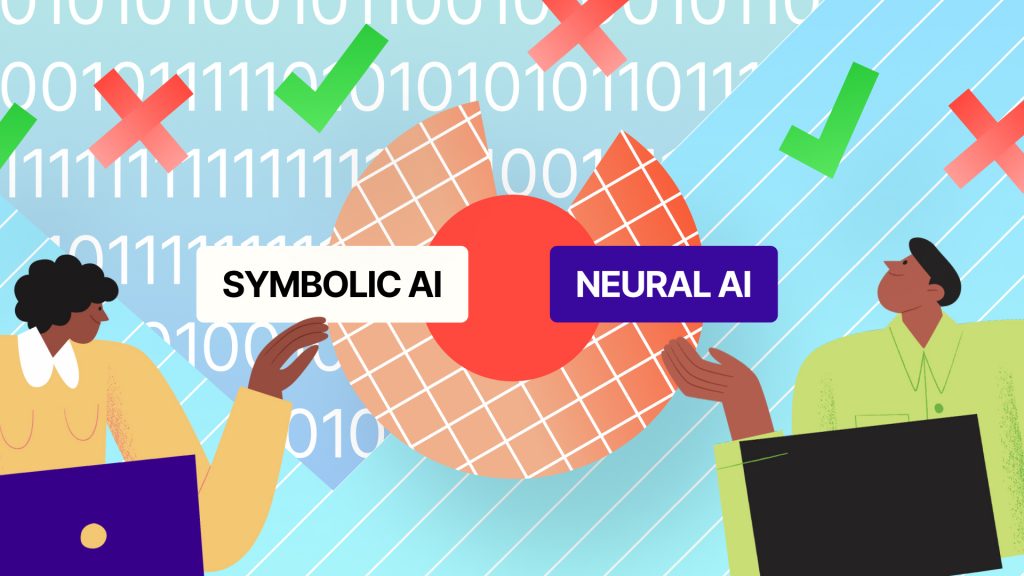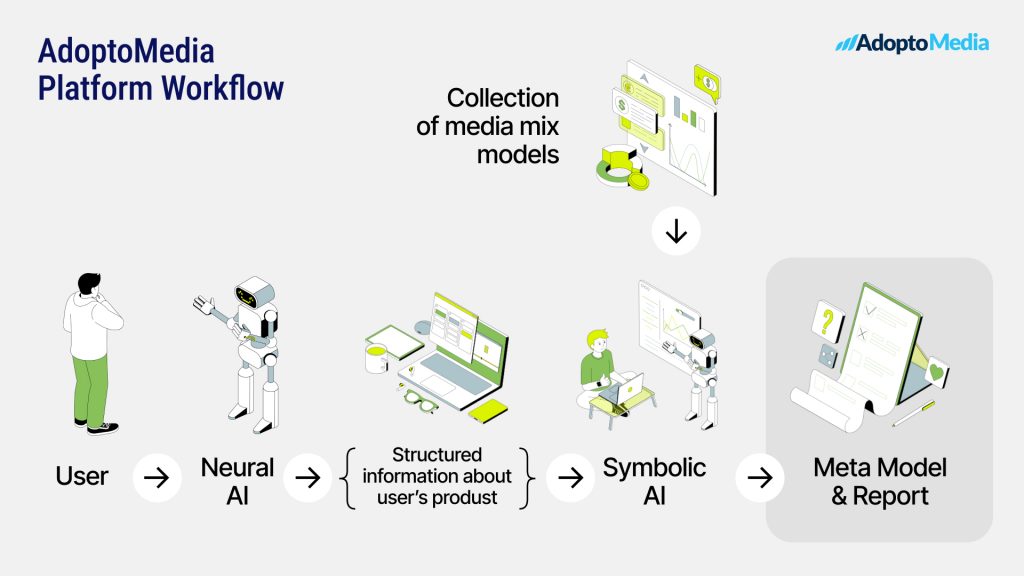
Neural AI, symbolic AI, and their hybrid
Large Language Models (LLMs), exemplifying the modern pinnacle of neural AI, have gained immense popularity for their impressive ability to comprehend natural language and extract structured information from a plain text. However, LLMs face challenges in following strict rules and executing complex logical reasoning consistently, as their learning is rooted in statistical probabilities of patterns rather than explicit rule-based programming.
In contrast, Symbolic AI emerged in the mid-20th century as one of the earliest approaches to artificial intelligence. Pioneered by researchers like Alan Turing and John McCarthy, symbolic AI aimed to replicate human intelligence by encoding knowledge structures and rules for operating with them into computer programs. At first, it achieved notable success in domains with well-defined rules given in modest quantities. However, its limitations became evident as the complexity of problems increased. Furthermore, symbolic AI struggled to handle uncertain or incomplete information, adapt to dynamic environments, and learn new rules and structures from data.
The table below summarizes the key differences between neural and symbolic AI. These approaches have complementary strengths and weaknesses as shown in the table. Closing this gap is crucial for enhancing the practical utility of AI in scenarios that demand precision in adherence to rules and mathematical calculations as well as operating with complex patterns and uncertainties.
| Property | Neural AI | Symbolic AI |
| Model-building approach | Learns from data through training a neural network i.e. adjusting its internal parameters based on the provided set of input-output pairs. | Knowledge is explicitly programmed by human experts, and the system follows predefined rules. It doesn’t learn from data. |
| Explanation and Interpretability | Neural networks usually operate as “black boxes” where interpreting the decision-making process is irresolvable. | Generally provides transparent and interpretable results, as the rules and symbols are explicitly defined. |
| Complex patterns and uncertainty | Can handle uncertainty, complex patterns and noisy data, learning robust representations. | May struggle with handling complex patterns, uncertainty and imprecise information. |
| Complex reasoning and precise calculations | Struggle with explicit logical reasoning and may calculate incorrectly. | Excels in domains where tasks can be precisely defined by a set of rules or require precise calculations. |
The combination of both approaches is called hybrid AI, where neural AI is responsible for processing raw input data, leveraging its strength in learning patterns. In turn, extracted structures are passed to the symbolic AI, which processes them with mathematical precision and rule-based logical reasoning. This collaboration results in a versatile system capable of handling complex tasks across diverse domains.
AdoptoMedia’s hybrid AI-driven platform
How marketing mix modeling works
Media mix modeling (MMM) addresses the challenge of attributing the impact of various jointly used marketing channels, such as television, digital, print, and radio, on the specific business KPI. This approach resolves the problem by employing statistical methods and analytics to measure the effectiveness of each marketing component based on historical observations. The obtained solution can be further used to optimize budget allocation, and ultimately improve the business KPI.
What is a metamodeling approach?
When historical observations are not available, for example, in case of a new product in the company, the traditional MMM is not applicable. However, one can adjust parameters of the existing model for a similar product to obtain a crude model for the new product. Such an approach is called metamodeling. The similarity of products is based on their descriptions, business models, industries, geography, market sizes and market stages (e.g. maturity, growth) and others.
Combination of MMM and hybrid AI
AdoptoMedia provides a platform for metamodeling using a collection of in-house developed media mix models for various products. The platform employs a hybrid AI to perform the whole process starting from communication with users regarding their product properties, available budgets and target values for business KPIs, through selecting the most similar product from the collection and adjusting its parameters, to optimizing budget allocation according to users requirements and creating reports with transparent interpretable calculations.
You can read more about how marketing mix modeling works and learn about the differences between AdoptoMedia MMM tool and open-source MMM solution by Meta here. There is also an article in our blog about how to use MMM to measure the long-term effects of advertising.
The general workflow of the platform is illustrated in the figure below. The user engages with the neural AI module through a chatbot. Thanks to the latest advances in LLMs, this interaction mirrors communication with a human assistant, wherein the AI assistant queries the user about the product’s attributes and other requirements, addressing user queries as needed.
Subsequently, the neural AI module extracts all relevant product information into a structured format and transfers it to the symbolic AI module. The latter identifies the closest product model from the collection of media mix models, adjusts its parameters to customize the model based on the user’s product properties, effectively transforming it into a metamodel.
The symbolic AI module then conducts budget optimization considering specified business KPIs and budget distribution constraints. Finally, the metamodel parameters, budget distribution across channels and dates, and corresponding business KPI forecasts are compiled into a report.

Two screenshots below demonstrate the part of the interaction process with a current chatbot. It can effectively clarify users’ questions regarding requested product’s parameters and parse inputted answers into the structured format. These actions do not involve complex reasoning, however, they face complex patterns, imprecise information and require adaptation to new situations on the fly. All of these are suitable for handling with neural AI.

An example of the extracted structured information about the user’s product is provided below. This format is suitable for further processing by symbolic AI methods.
| { …. “product_category”: “E-commerce”, “kpi”: “New clients”, “region”: “Others”, “total_addressable_market”: 100000, “last_year_kpi”: 5000, …. } |
Examples of preview and website versions of reports are shown below. We also provide export of a self-contained report into excel file which can be used offline.

You can try this free chatbot and get personalized marketing mix recommendations for your product on our partner’s website.
Next steps
Capabilities of LLMs are being rapidly improved nowadays. We are working to keep up with them in order to improve user experience with the chatbot and products matching system. In particular, the following upgrades are planned next:
- reflection of user’s product features description in the similarity measure, which will help to resolve ambiguity in case multiple products from the collection correspond to inputted user’s product parameters (custom LLMs can be used to obtain semantic text similarity);
- converting arbitrary budget distribution requirements into constraints that will be checked by the symbolic AI (advanced LLMs can generate programming code that implements checkers for the constraints out of the plain text provided by the user; for example: minimal purchasing amount for TV channel, maximal frequency of online webinars, specific order of channels activation etc.).


